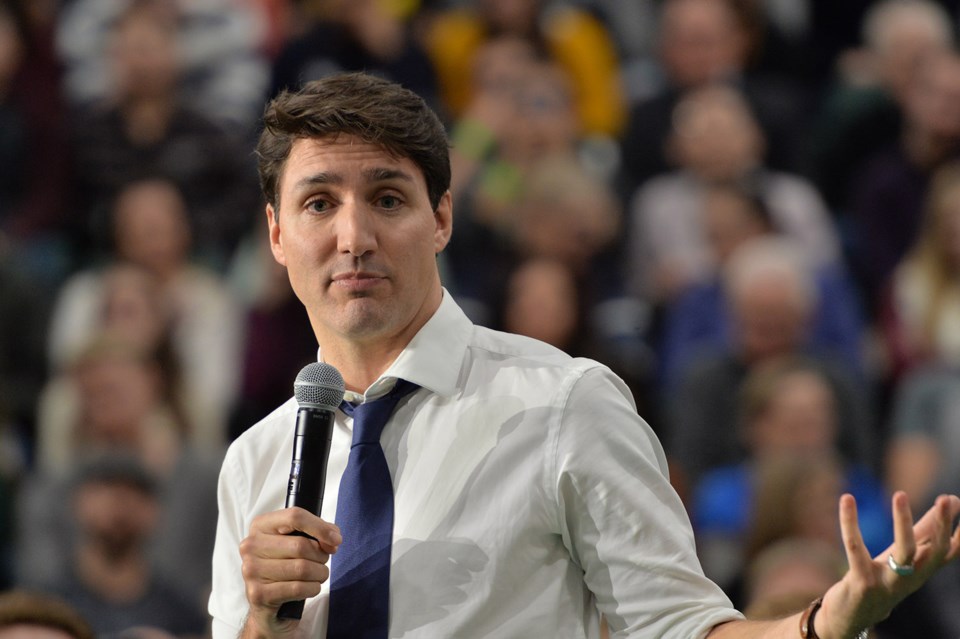The last five years in the oilpatch have been rough.
It was in late 2014 when the wheels started coming off. Oil at US$100 a barrel disappeared, never to reappear. By January 2015, those wheels hadn’t just come off, they had bounced through the ditch and over the barbed wire fence.
Then in October, sunny ways were upon us and we had a new Liberal federal government led by Justin Trudeau. To be clear, when he came in, things had already been bad for a year, and getting worse. The next year saw oil fall to below US$30. ��
And let me also be clear that the prime minister of Canada has no control whatsoever on the price of oil. The president of the United States doesn’t really have much, either. It’s the Saudi oil minister, and above him, the crown prince and king, who determine if oil is going to be US$50, US$75 or US$100 a barrel.
But there are things Canadian governments, at the behest of the sitting prime minister, does control.
The Great Bear Rainforest С����Ƶ no place for a pipeline is one. The tanker ban off the northern B.C. coast is another. And bringing in a law that will require a pipeline proponent to be looney to even try a new project is a third.
Perhaps that’s why The Joker is in theatres now. While I haven’t seen it, I am assuming he’s actually a Canadian pipeline executive driven insane.
We know that the Northern Gateway pipeline cancellation, despite having been approved by the previous government, can be laid directly at the feet of the current government. And yes, there was a court challenge to its consultation process, but by that time, the point was essentially moot.
We know that federal government moving the goalposts on Energy East led to its demise. And despite the talk of many a provincial premier, TC Energy, formerly TransCanada, is not showing interest in taking another wack at it.
But did you know both of those pipelines were supposed to be in service by the end of 2018?
Because they weren’t in service, the latter part of 2018 saw Saskatchewan and Alberta all but giving away their heavy oil and bitumen. If price differentials had stayed that way, Premier Moe told me a year ago that Saskatchewan would have lost $500 million in royalties and taxes per year. As it is, Saskatchewan probably lost somewhere around $300 million that year. I’m not solid on that, but late last year that number got a lot of play from the provincial government.
That number is very, very close to the cost of the newly opened Jim Pattison Children’s Hospital, the one we spend many years budgeting and fundraising for.
If just those two pipelines had been built, Saskatchewan could build a children’s hospital a year. Or several smaller ones – like Weyburn and Yorkton, in dire need of replacement.
This is the direct impact of the current federal government on Saskatchewan by way of the oilpatch.
The first six years I’ve worked with Pipeline News, it was all about good times. The next four years were about tough times. This last year has been all about mad times.
I had never gone to an oilpatch political rally before this past year. Or a convoy, or protest for that matter. Protests against the oilpatch? Sure. But in favour? Not so much.
The oilpatch is mad at this government. Almost every significant oilpatch town had a protest, convoy or rally in it in the past year. Things may have calmed down a bit, but I think that’s because many are seeing the solution is the ballot box instead of honking their horns on the street.
The price of oil is still floating around US$54 per barrel. Some might say that’s the key reason for all the above. That’s basically what Prime Minister Trudeau told me when I asked him in January about those protests. But explain to me why capital investment in Canada’s oilpatch has declined by half, while in the U.S., they’ve added enough production to equal all of Canada? Yes, geology has a lot to do with it. But don’t forget, our geology includes the third largest oil reserves on the planet.
I’ve asked a few people what will happen to the oilpatch if this government stays in power. Several don’t think there will be much of an oilpatch left.
I’m still hearing of bankruptcies. And the pain this downturn has imparted. We can tolerate it, somewhat, from outside sources. But it’s pretty tough to take when your own government is an enormous part of the problem.
Oh, one last thing. Both the Conservatives and Liberals have claimed that no export pipelines were built under the opposite’s time in power. Balderdash. I have personally stood on the rights-of-way for Enbridge’s Alberta Clipper, completed in 2009 under a Conservative Government, and Enbridge’s Line 3 Replacement, whose Canadian portion will be in service later this year. Line 3 was built under the Liberal government.
The way things are going, that might be the last one for a very, very long time. If ever.
��
Brian Zinchuk is editor of Pipeline News. He can be reached at [email protected]




